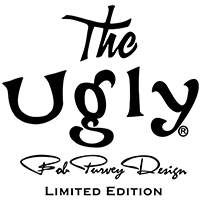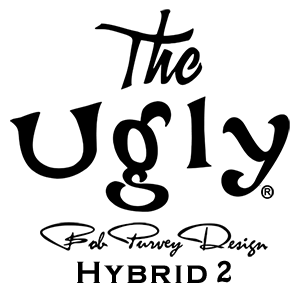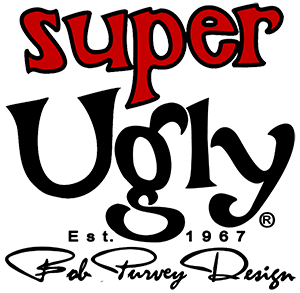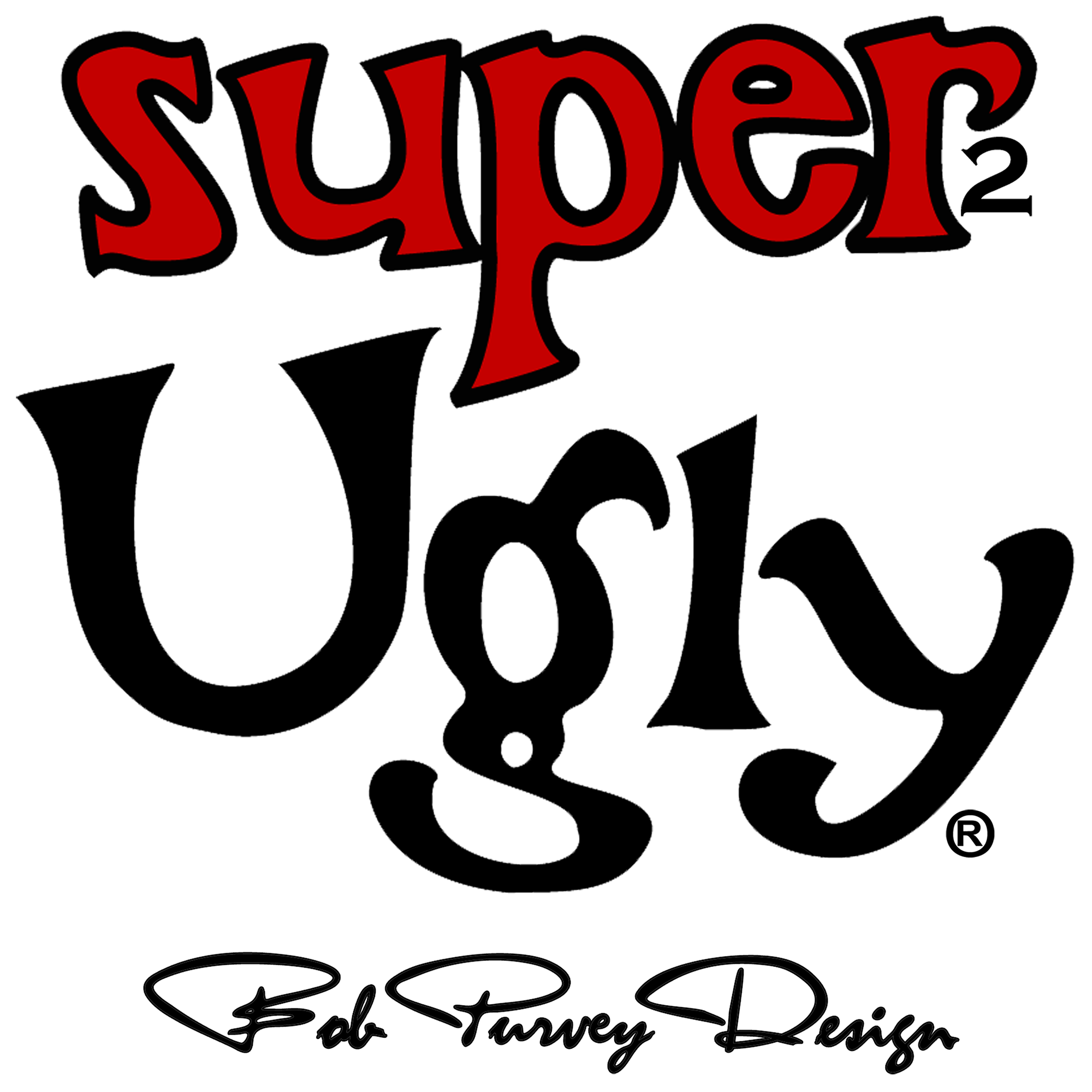





UGLY NoseRiders
Frequently Asked Questions (FAQ)
Latest update: 12/05/2023
Q? What’s in the shape that makes an Ugly such an extraordinary noserider?
A. We’ve designed The Ugly nose, center, tail, rails, and rocker shapes to complement each other to maximize the most fantastic lift under the nose, and overall maneuverability. When shaped together, this unique combination of curves and contours makes the nose support your body’s weight when the Ugly is in the optimum position on the wave. It enables you to turn up quickly and down the wave from the nose or any part of the board.
1. The concave under the nose area creates an air bubble.
2. A wide nose increases the size of the air bubble.
3. A kicked-up tail holds the tail down.
4. A kicked-up nose prevents it from pearling.
5. A wide tail allows for snappy turns.
6. Rails are contoured from the nose to the center and then to the tail to maximize lift and ease of turning from rail to rail.
DISCLOSURE: Many benefits come from noseriding. Not only does it look like an extraordinary accomplishment, but it gives you an extraordinary sense of exciting levity. Noseriding is magical, but it’s not a mystery, even though it looks like some mysterious forces are at play. When it appears that a surfer is noseriding, it seems somehow that they have pushed a button to levitate on the nose while facing the challenge of the oncoming wave. However, there is no button.
Noseriding is an art. The skill involves lots of practice to get the timing of walking to the nose when the wave is formed to accommodate the most air under the nose, and the noserider surfboard shape is formed to carry the body weight of the surfer and allow the surfer to maneuver around the wave while staying on the nose. After lots of practice and spills, you will get the timing and the best noserider shape for your body to accomplish this magical noseride. The ongoing challenge is not just the wave but also having the best noserider shape under your feet.
Longboards are meant to be walked on. If you are riding a longboard, you will inevitably get tempted to walk to the front end and test your balance out there.
The sport of surfing is an individual, independent experience that, over time, after riding wave after wave, strengthens your understanding of the physical language of surfing and its measurable challenges faced on each wave. Each ride requires improvisation to go with the flow. Your noserider must be instantly responsive to your every directional move.
How do I fill out the order form and choose my Ugly noserider dimensions?
Q: How do I decide on the length?
A: Your height predicates the length. Walking on a longboard is the primary difference between a long and short board, putting aside noseriding of course.
A traditional longboard length enables you to take one, two, or three steps to get to the nose, depending on your height, body frame, normal stride, and the parameters of the surfboard’s dimensions you choose to work within. Also, remember, your knees are always bent, which makes your stride shorter than walking on a fixed surface.
Generally, the eight-footer parameter allows for one comfortable step, of an average six-foot tall person, to reach the nose. A nine-footer allows for two comfortable steps, and a 10 footer allows for three steps, and so on. So, if you are about six feet tall with an average body frame, and wish to take two comfortable steps to reach the nose, we recommend three feet over your head as the length for you to start with or about a nine-footer.
Albeit, finding that perfect length for you to make all your moves fluid and efficient may take experimenting with different lengths (measured in half to quarter inches by advanced surfers) till you find that perfect length.
Remember, you are equating height and stride to length. EXAMPLE: 6’ 2” would get a 9’ 2” longboard or 8’ 2” mid-size board (one-stepper).
Q: How do I decide on the width?
A: Your frame size predicates the width. You will want a wide board if you have a wide body. If you are slender, then you don’t need a wider shape.
Floatation is the principal factor that goes into the decision on width, but not the only factor because rail shapes can also affect floatation. Of course, a wider board is more stable from side to side and has less wobble, but it also makes the board ride higher on the wave’s surface.
The width you choose for the center is critical. The center width can be anywhere from 22 inches to 24 inches for an average six-foot tall person, with an average body frame (from 160 lbs. to 190 lbs.). The Ugly Special Edition (original Ugly specifications) width traditionally is 23″ center x 20” nose x 17″ tail x 7″ tail block. These widths can be simply modified by selecting your center width, and we’ll scale the other width measurements to maintain the Ugly outline. We can also keep the general Ugly outline even if you modify the widths a fraction of an inch, here or there.
Q: How do I decide on the thickness?
A. Your weight predicates the thickness and the related floatation. Also, the rail shape will have a determining factor in floatation. We will recommend the thickness for you after you have determined the length, width, and model best suited for you.
Q: The Ugly or the Super Ugly?
Why would I choose The Ugly over the Super Ugly, a longboard over a mid-size board (AKA: mini-noserider or funboard), 8′ 4″ and under in length?
A: You get greater stability when choosing The Ugly longboard length over the Super Ugly mid-size length.
If you are a beginner or advanced and like to walk the board a lot, the longboard length is more stable from tip to tail than the mid-size length, logically, because it’s bigger overall. It’s easier to stand up on a longboard, but the trade-off is, that it’s more difficult to turn than on a shorter board.
So, if you want the longboard ride, as well as noserides, but with snappy turns, pick the Super Ugly.
Both The Ugly and Super Ugly noseride just as well. The Super Ugly moves quicker and The Ugly floats better.
Q: Lightweight longboards vs heavy?
A: I heard heavy boards are better for noseriding because they hold deeper in the wave –is that true?
Yes and no. Heavy boards indeed rest deeper in the water. But, they are slugs and resistant, more difficult to turn, and getting them to release from being positioned deep in the wave will be difficult. A lighter board tends to be more buoyant, thus easier to turn. The Ugly shape functions to avoid resistance. For example, the kicked-up tail catches the flowing water over it, which causes the tail of the board to stay submerged and consequently hold the nose up longer; like a see-saw you weigh down on one end causes the opposite end to rise.
Q: How do I decide on the rail shape?
A: Consider the board in three sections, i.e., the nose, center, and tail. Each section should have rail configurations determined by you and your shaper.
The rail configuration has a center rail line around the entire board, with the line dipping or rising by a percentage in each section , causing the rails to get shaped with a downward or upward curve by a percentage.
50/50 means the curves have an equal percentage from the top and bottom to the center line.
If you want a flat bottom tail like on a short board, the top would be turned down 90 %, and the top turned up 10%.
Q: What blank weight should I choose, green, blue, orange or red blank?
A: We are devoted to U.S. Blanks, manufactured in So. California. Following are US Blank’s descriptions of their blanks (choose by colors). Any of the choices can be ordered custom. We recommended choosing between Green, Blue, and Red for Ugly noseriders.
They are all made with Polyurethane (PU). Epoxy blanks have been discontinued.
-
ORANGE (COMPETITION WEIGHT): approximately 12% – 13% lighter than BLUE. Currently only available in shortboards.
-
RED (PERFORMANCE WEIGHT): approximately 6% – 7% lighter than BLUE.
-
BLUE (STOCK WEIGHT): considered the stock density and is the basis for comparison.
-
GREEN (CRUISERWEIGHT): approximately 9% – 10% heavier than BLUE
-
BROWN (CLASSIC WEIGHT): approximately 30% – 32% heavier than BLUE. These blanks will be identified with a brown tipped nose.
-
BLACK (TOW-IN WEIGHT): approximately 205% heavier than BLUE. These blanks will be identified with a black-tipped nose.